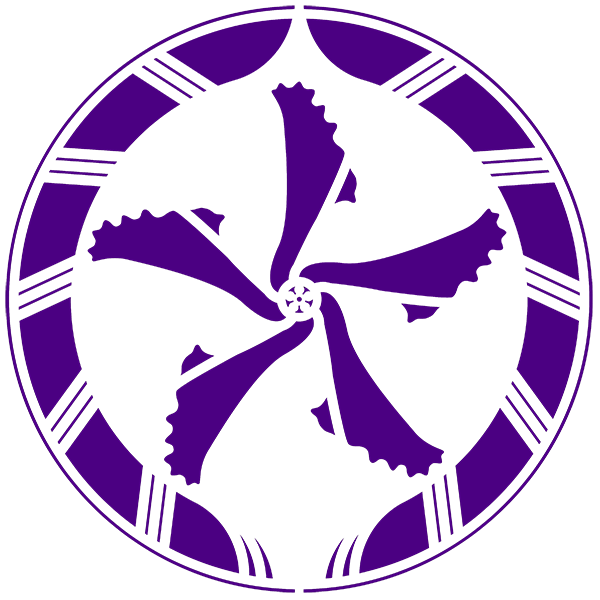
The Ukrainian Tryzub
Ivan Hryhorchuk of Viter Ceramics is a young Ukrainian potter whose work is inspired by Japanese ceramics and tea culture. As a fellow Japanophile, I found his teaware very relatable and bought some of it in 2019. When Russia invaded Ukraine in February of 2022, Ivan’s life and that of most Ukranians turned upside down.
Overnight, Ivan’s attention turned to survival, to protecting his young family and finding ways to fight back the oppressors. Constantly changing locations, his ceramics practice had to take a step back. But whenever possible, or at least when it felt safe enough and he could find the materials to do so, Ivan would attempt to make and sell pots to support the resistance. That’s how last year I bought another one of his teacups at an online auction.
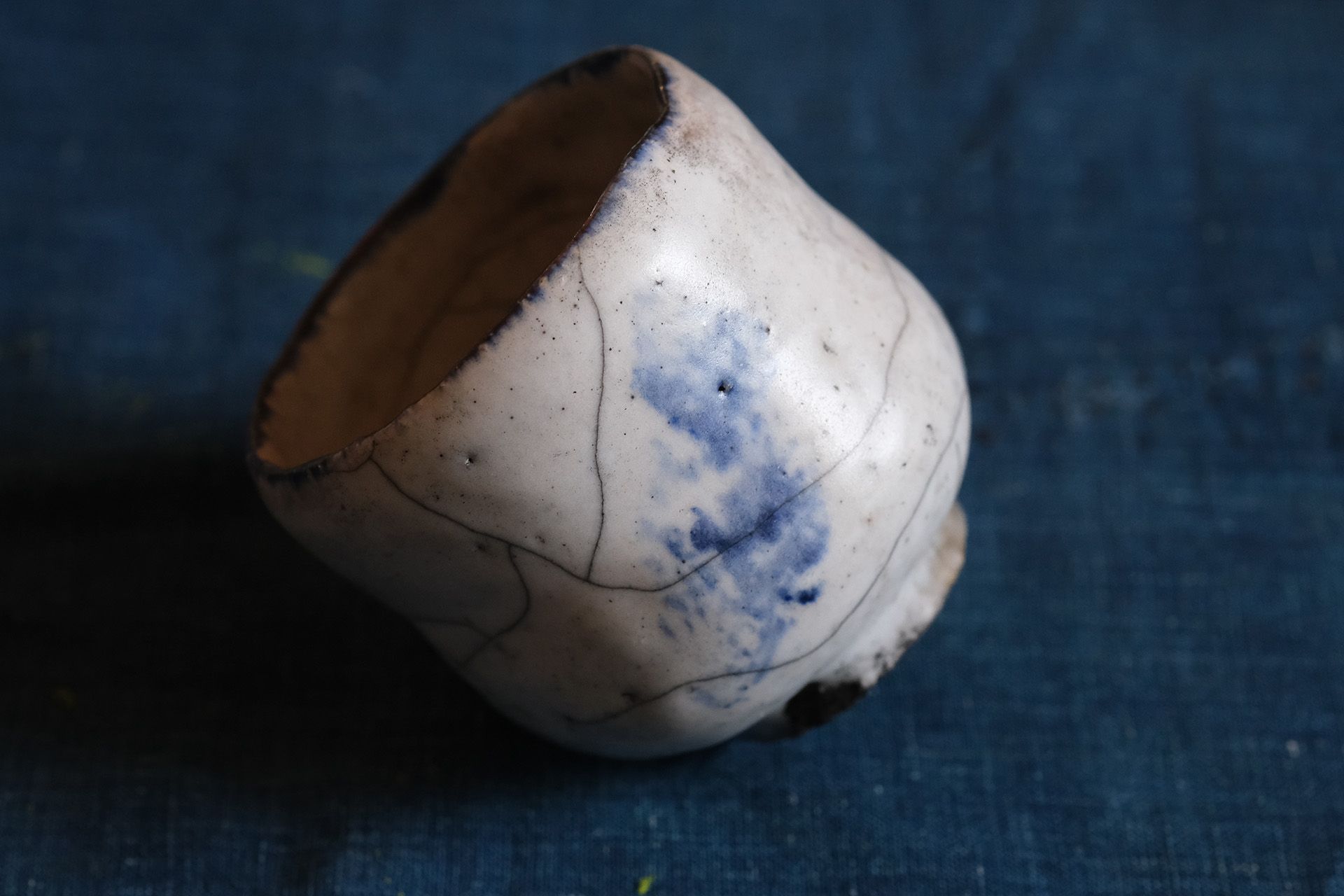
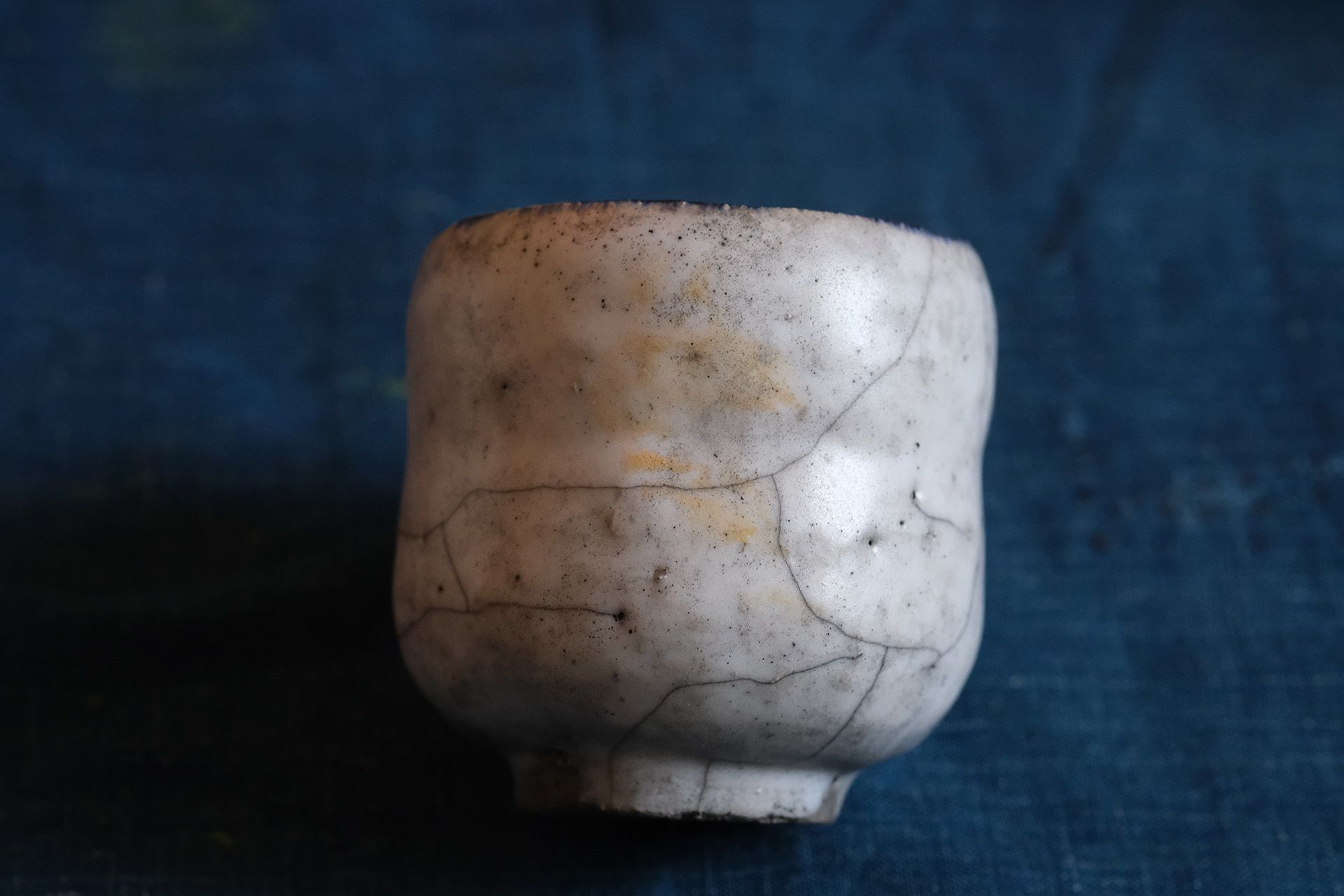
The cup’s glazing had blue and yellow accents representing Ukraine's flag. It also had a potter's mark, a trident - tryzub in Ukrainian - that was not present in his earlier work. When I asked him via an Instagram DM if this was a new addition, he replied “Oh, it’s as almost new as our written history is.”
“ [The] Trident is an ancient symbol of [the] Ukrainian country, and its simplified shape was used as a symbol of our long fight for freedom for centuries. And now it’s on the top again, it’s everywhere, as [an] easily recognizable mark. So I decided to use it for my works made during war, because it’s something that says more than any personal seal, and also because we use our works to support [the] defence of our land.”
In September 2022 Ivan made a statement teabowl - a wartime chawan - using local clay mixed with shrapnel and pieces of artillery ammunition that have become a part of everyday life: “This tea-bowl is not utilitarian, but more of an art object and reflection, a piece of consolidated experience stabilised in a material medium which is expressed through a form that’s so usual for me and for tea lovers in general."
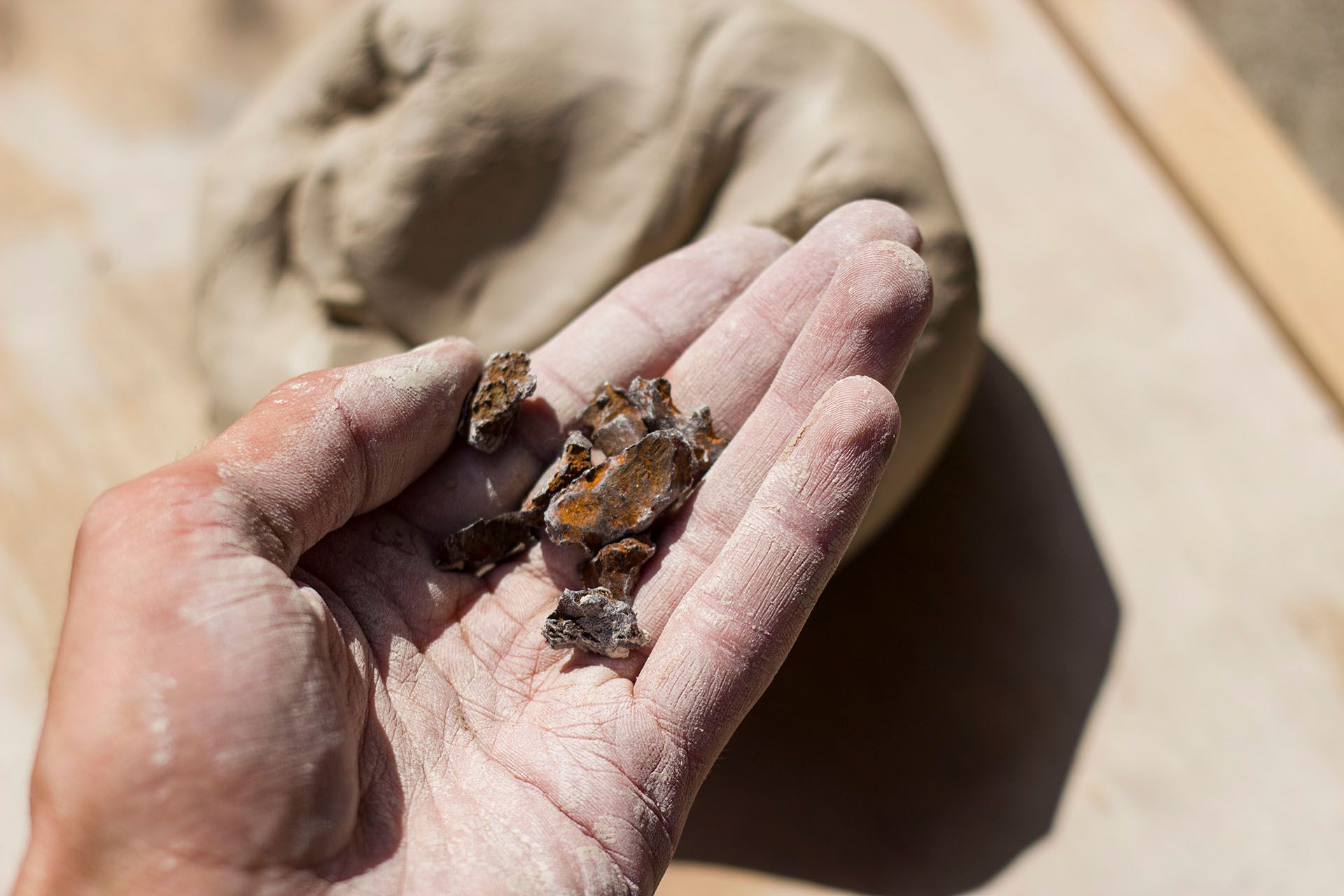
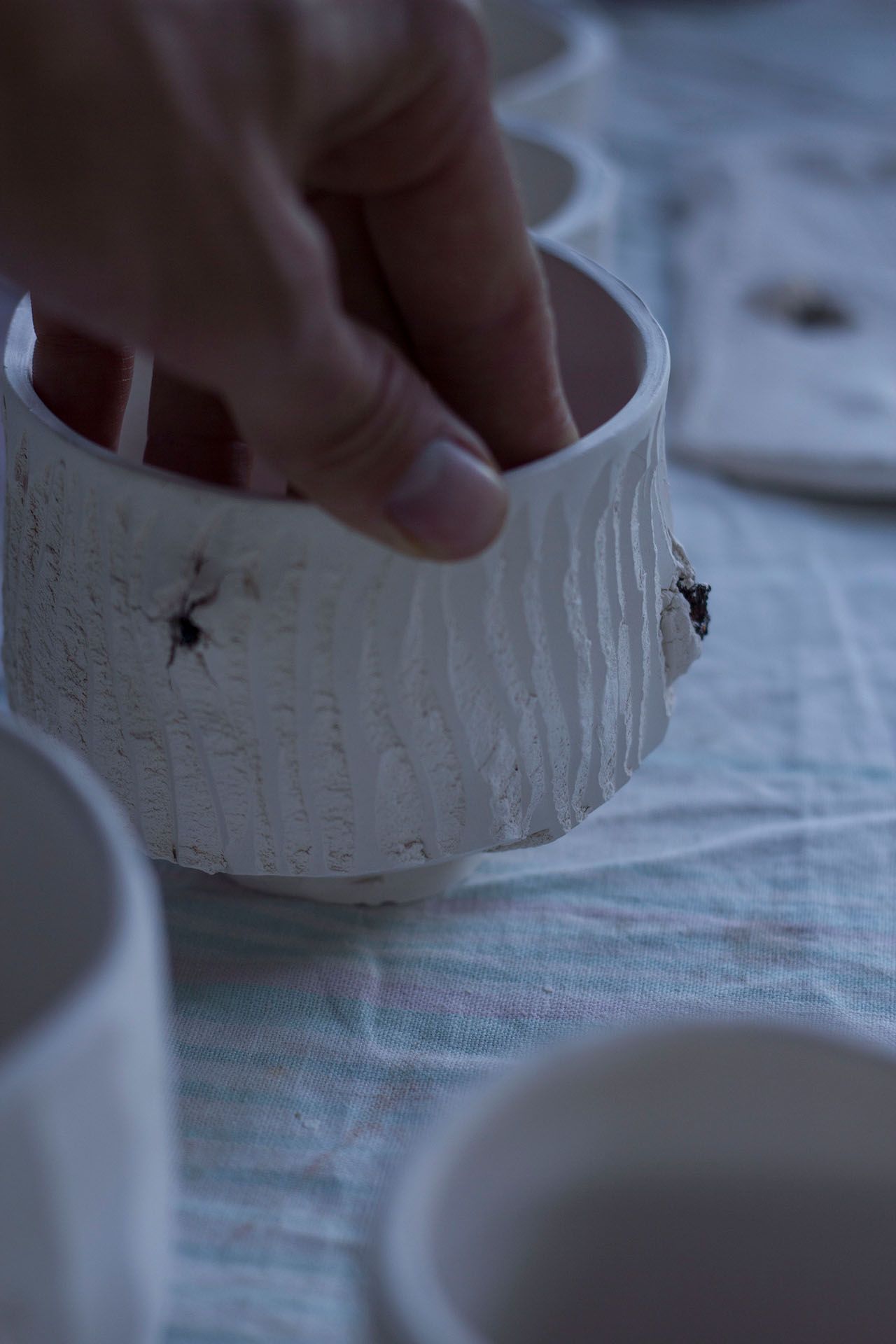
I needed to put the incompatible things together, to intersect my teaware making techniques and actions of war as we lived through it in direct contact. All the particles were picked up in the neighbourhoods in our Bucha district - they were laying everywhere around when we returned to our home in April. Sharp rusty spots, left after shots, became parts of our landscape and integrated into it. [It acts] as an anchor of time when everything seems both very real and surreal. But what’s always real, what’s the most grounding and motivating - it’s that deep knowledge that we will win, because there’s no other way for Ukrainians to live further.”
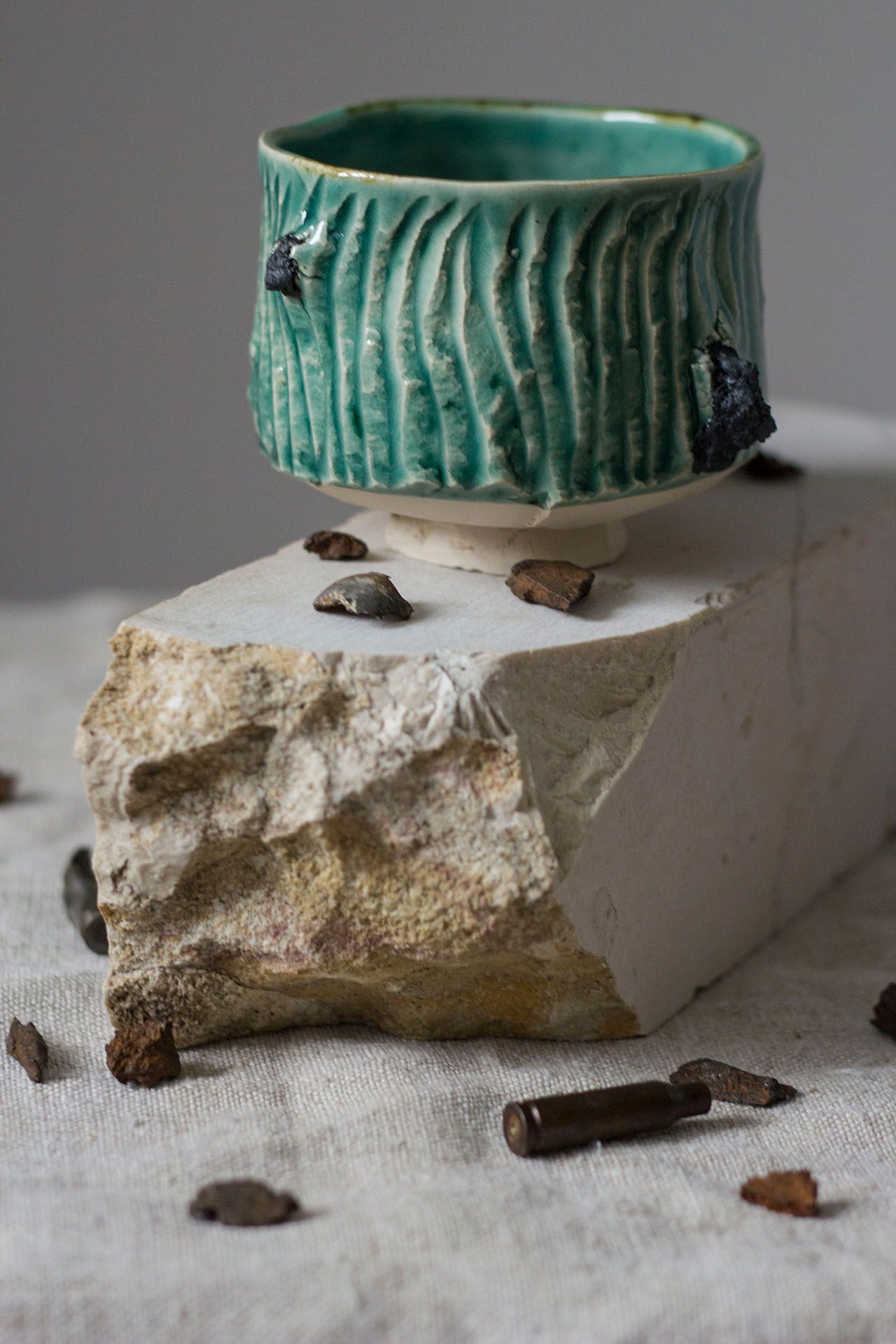
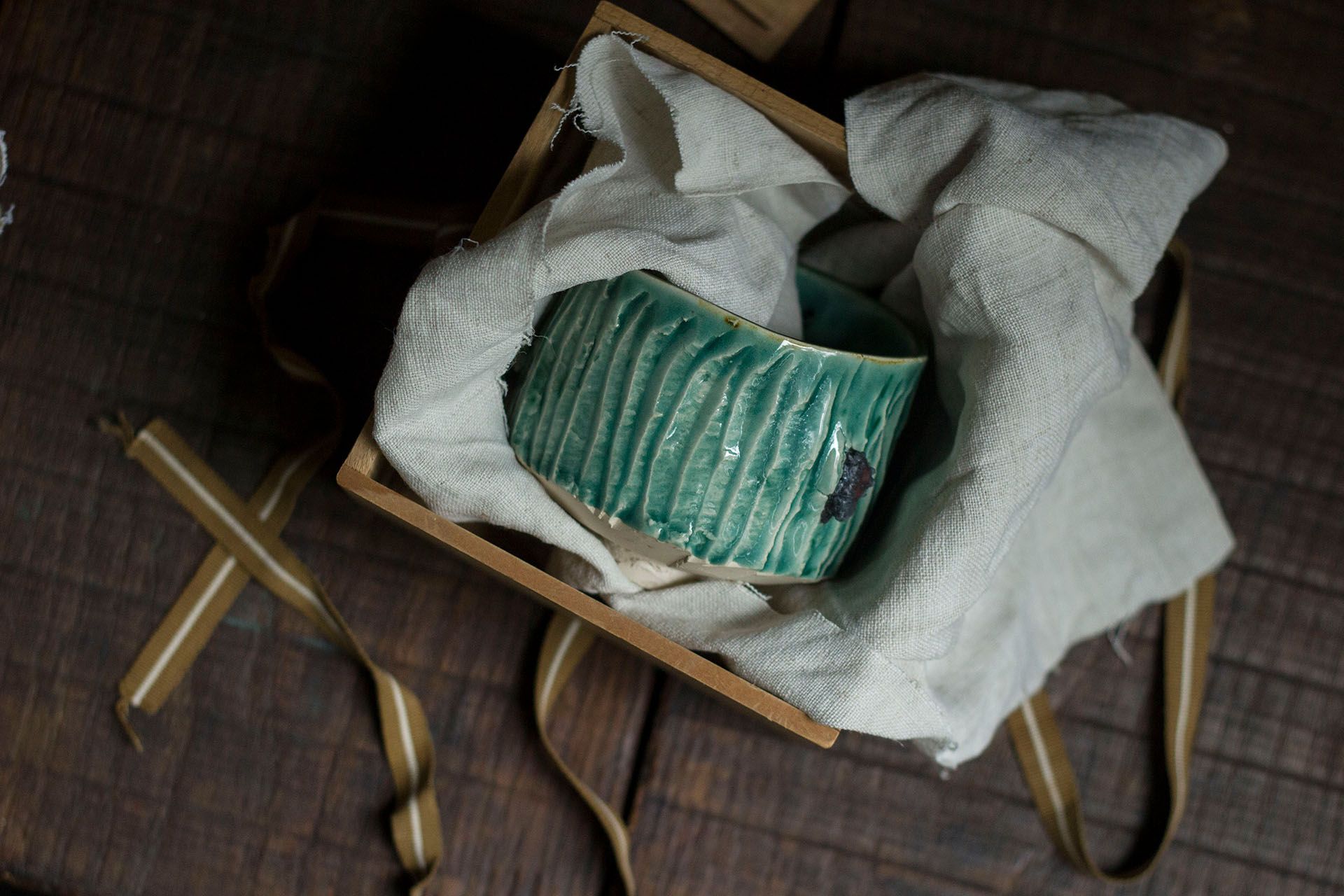
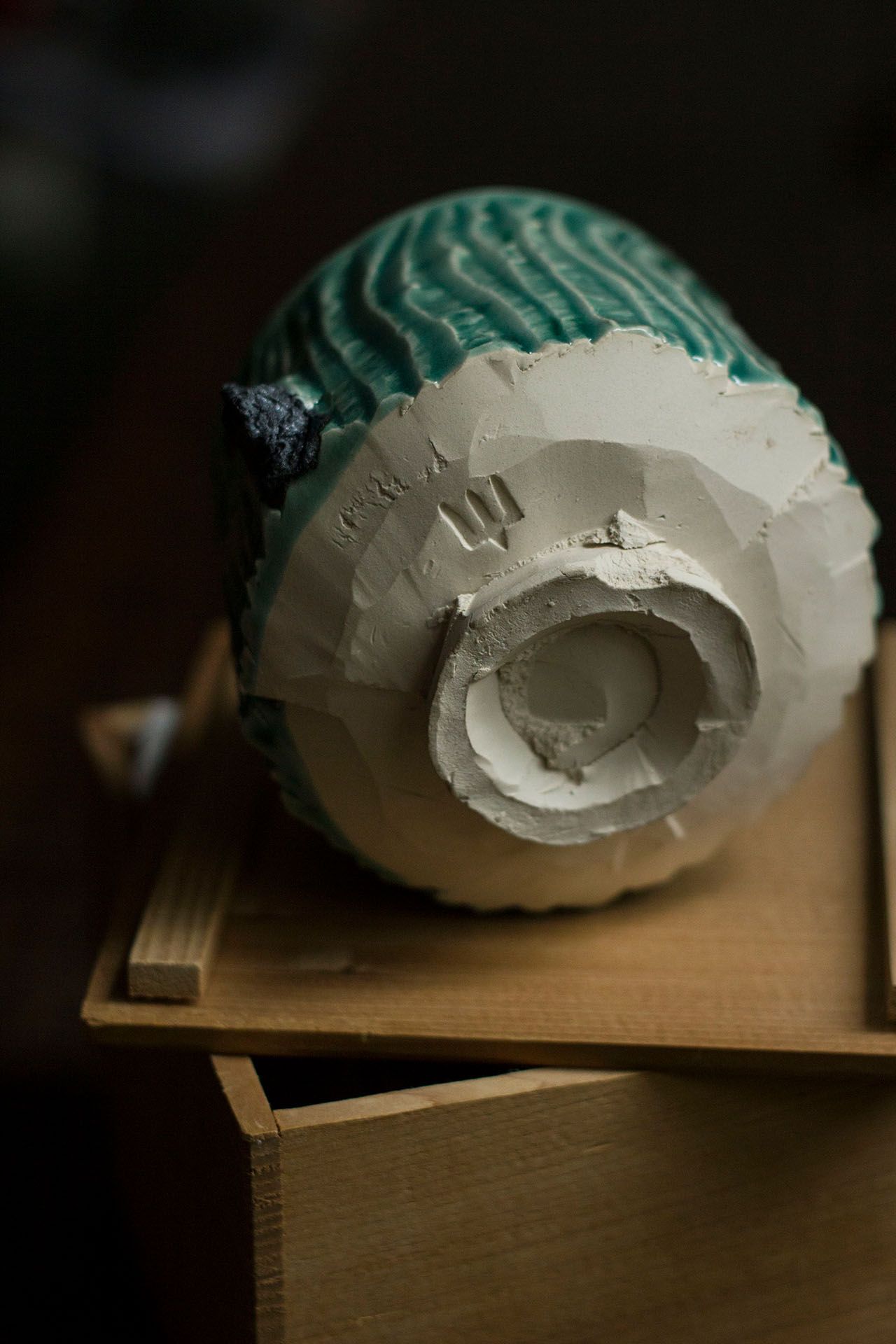
I drink from my Viter Ceramics cup often. The trident looks like a scar reflecting the suffering of the Ukrainian people. When I hold it in my hand it makes me think of Ivan and his family, and wish that the war will soon end in favour of Ukraine.
Sláva Ukrayíni!
つづく

